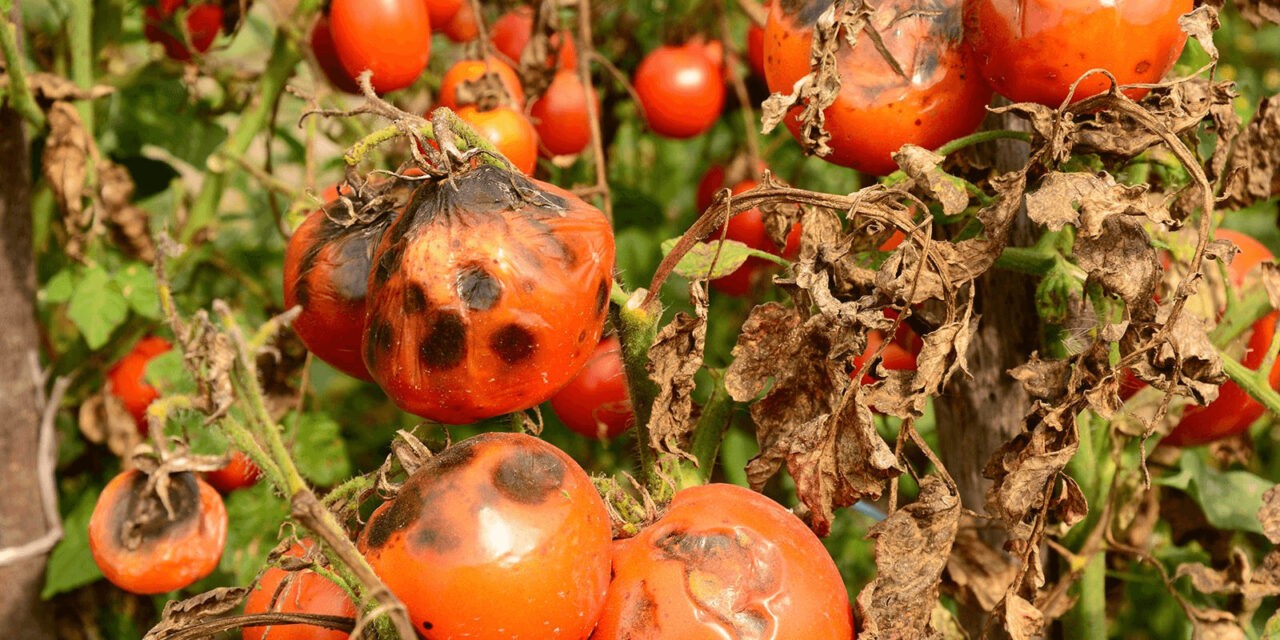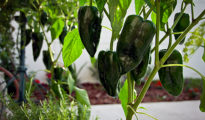Gardeners and farmers around the world adore the tomato plant for its vibrant fruit which can be used in a multitude of dishes. However, tomatoes are also susceptible to various diseases, with blight being one of the most notorious. In its advanced stages, tomato blight can decimate entire crops, leading to considerable financial and time losses. Understanding the early signs of blight and adopting strategies to manage it can help ensure a healthy harvest.

What is Tomato Blight?
Blight refers to a group of fungal diseases that affect various plants. In tomatoes, the two most common types are late blight (caused by Phytophthora infestans) and early blight (caused by Alternaria solani). Both can be devastating if left unchecked.
Early Signs of Tomato Blight
1. Dark Spots on Leaves: One of the first signs of both early and late blight is the appearance of small, dark spots on the leaves. These spots can have a water-soaked appearance and will eventually grow in size. In the case of early blight, the spots might have concentric rings, giving them a ‘bull’s eye' appearance.
2. Yellowing around the Spots: The area surrounding these spots might turn yellow. This is a process called chlorosis, and it results from the plant's inability to perform photosynthesis efficiently.
3. Wilting: As the disease progresses, the affected leaves can wilt and fall off. In severe cases, the plant can lose a significant portion of its foliage.
4. Lesions on Stems: Dark, canker-like lesions can appear on the stems and branches. This is more common in late blight.
5. Fruit Spots: Both types of blight can affect tomato fruits. The fruit might display sunken, dark, and rotten spots. These tomatoes are often unfit for consumption.
Managing Tomato Blight
1. Prevention is Key:
- Rotate Crops: Avoid planting tomatoes or other susceptible plants like potatoes in the same soil year after year. This breaks the disease cycle.
- Choose Resistant Varieties: Some tomato varieties are bred for resistance against blight. It’s a good idea to choose these if you've faced blight issues in the past.
2. Proper Plant Spacing: Adequate spacing ensures good air circulation, which reduces humidity—a factor that promotes fungal growth.
3. Water at the Base: When watering, aim to keep the foliage dry. Use drip irrigation or water at the base of the plant, preferably in the morning.
4. Regular Inspections: Monitor plants regularly for signs of blight. Early detection means you can manage the problem before it gets out of hand.
5. Remove Infected Leaves: If you spot leaves showing early signs of blight, remove and discard them. Do not compost infected material, as the pathogens can survive and infect future plants.
6. Fungicides: As a preventive measure, consider applying organic fungicides like copper sprays or those containing Bacillus subtilis. Follow label directions for best results.
7. Clean Garden Tools: After working with infected plants, always sanitize your tools. This prevents the spread of the pathogen to healthy plants.
8. Maintain Soil Health: A healthy soil hosts beneficial microbes that can help suppress diseases. Regularly enrich your soil with compost and consider practicing no-till gardening.
9. Mulching: Applying a layer of straw or plastic mulch can prevent fungal spores in the soil from splashing onto the lower leaves of tomato plants.
10. Post-Season Cleanup: At the end of the growing season, remove all plant debris from the garden. This eliminates potential hiding places for fungal spores.
In conclusion, while tomato blight can be a daunting challenge, understanding its early signs and adopting a proactive management strategy can keep your tomatoes healthy and productive. Whether you're a novice gardener or a seasoned pro, always remember that a combination of prevention, early detection, and responsive action is the key to combatting tomato blight.
The Ecosystemic Impact of Tomato Blight
Tomato blight doesn't only affect tomato plants. Its presence can impact the entire garden ecosystem:
1. Reduced Pollinator Attraction: Healthy tomato plants can attract pollinators. A diseased plant might not flower as abundantly, potentially leading to reduced visits from pollinators.
2. Disease Spread to Neighboring Plants: Tomatoes aren’t the only plants susceptible to blight. Potatoes and other members of the Solanaceae family can also be affected, potentially leading to a garden-wide epidemic.
Holistic Blight Management Techniques
A holistic approach considers the entire garden ecosystem, aiming to balance pest and disease control with maintaining a diverse and resilient ecosystem.
1. Companion Planting: Certain plants, when grown near tomatoes, can deter pests and even boost the plant’s overall health. Basil, for instance, is believed to repel thrips (a carrier for certain fungal spores) and improve the flavor of tomatoes. Marigolds can deter nematodes from the soil.
2. Polyculture Planting: Instead of monocropping, which makes your garden more vulnerable to disease, consider polyculture. This involves interplanting various crops together, which can reduce disease transmission and improve soil health.
3. Encourage Beneficial Insects: Insects like ladybugs, lacewings, and spiders feed on pests that might carry disease. Consider plants that attract these beneficial insects to keep a natural check on disease spread.
4. Microbial Soil Enrichment: Continually enriching the soil with organic compost not only provides nutrients to plants but also introduces beneficial microbes. These microbes can compete with and sometimes suppress harmful pathogens.
Advanced Soil Testing and Health
Periodic soil tests can reveal more than just pH and nutrient levels. Advanced tests can identify specific pathogens and help in making informed decisions.
1. Disease Suppressive Soils: Some soils have naturally occurring microbes that suppress diseases. Identifying and promoting these can be a long-term solution to blight.
2. Biofumigation: Certain plants, when grown and then tilled into the soil, release compounds that can suppress pathogens. Mustard is one such crop that has shown promise in suppressing soil-borne diseases.
Education and Community Cooperation
Finally, combatting tomato blight isn't just an individual effort. As the spores can travel, community-wide outbreaks can occur.
1. Workshops and Classes: Organizing or attending local gardening workshops can keep you updated on the latest in disease management.
2. Community Reporting: If multiple gardens in a community are affected, reporting and collaborating can lead to better control measures.
3. Seed Sharing: Sharing disease-resistant seed varieties can help the entire community reduce susceptibility to blight.
Tomato blight, though a formidable adversary, can be managed with a combination of traditional and advanced techniques. By viewing our gardens as interconnected ecosystems and fostering community cooperation, we can create an environment where both plants and gardeners thrive. Remember, the key to managing blight, or any garden issue, lies in understanding, prevention, and timely action.



















